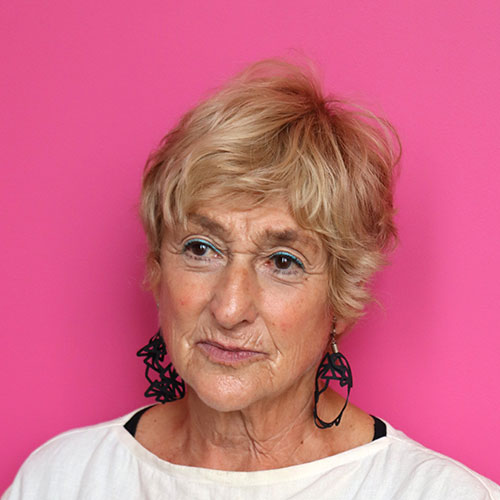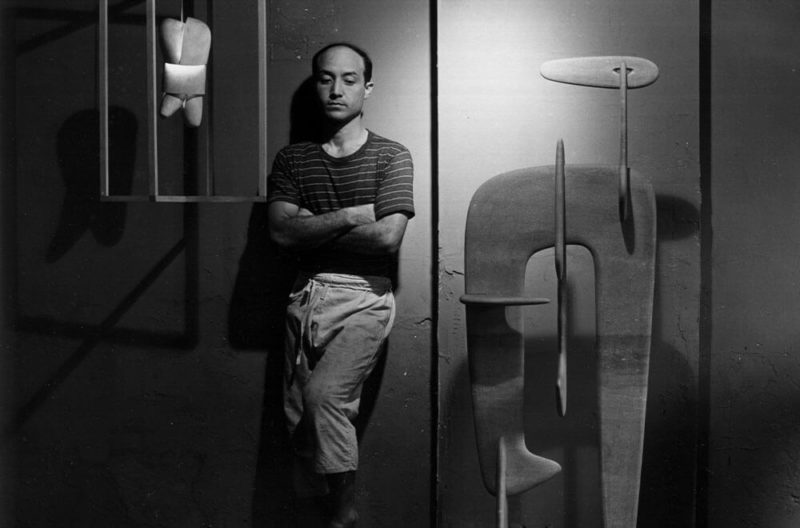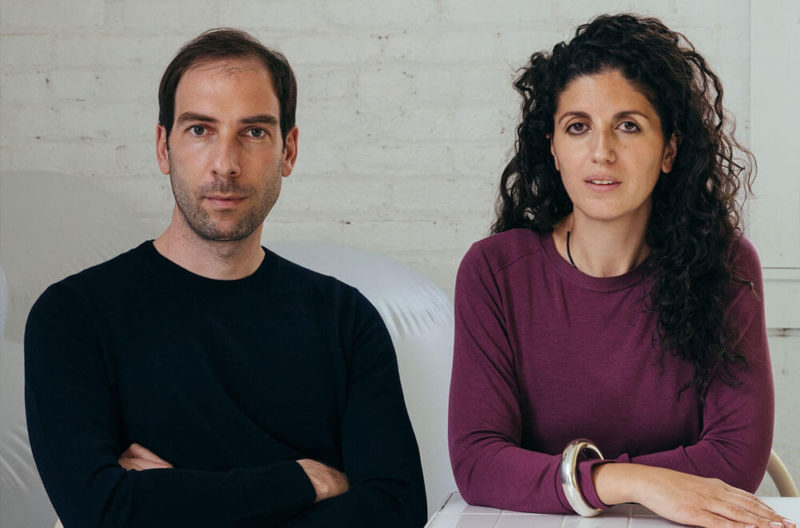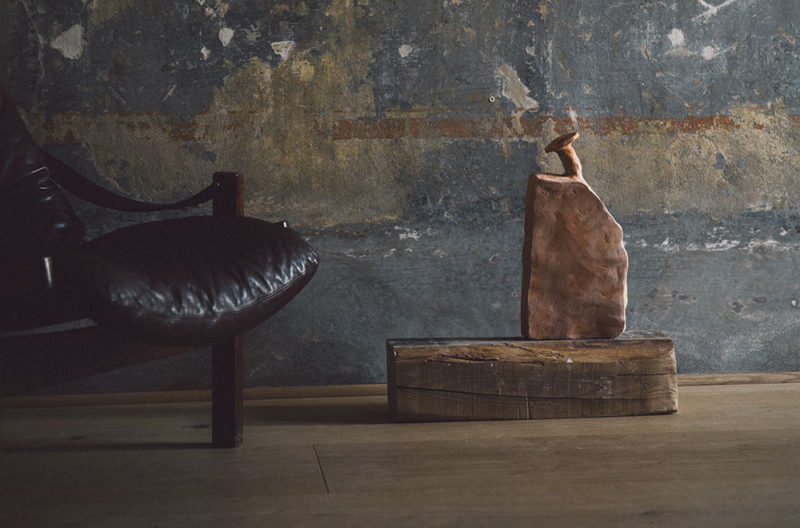London Dispatch / October 2021
From a vision of nature-inspired interiors, to the meditative work of Wonmin Park, via the eye-opening Noguchi show, Corinne Julius brings us the best of autumn shows.
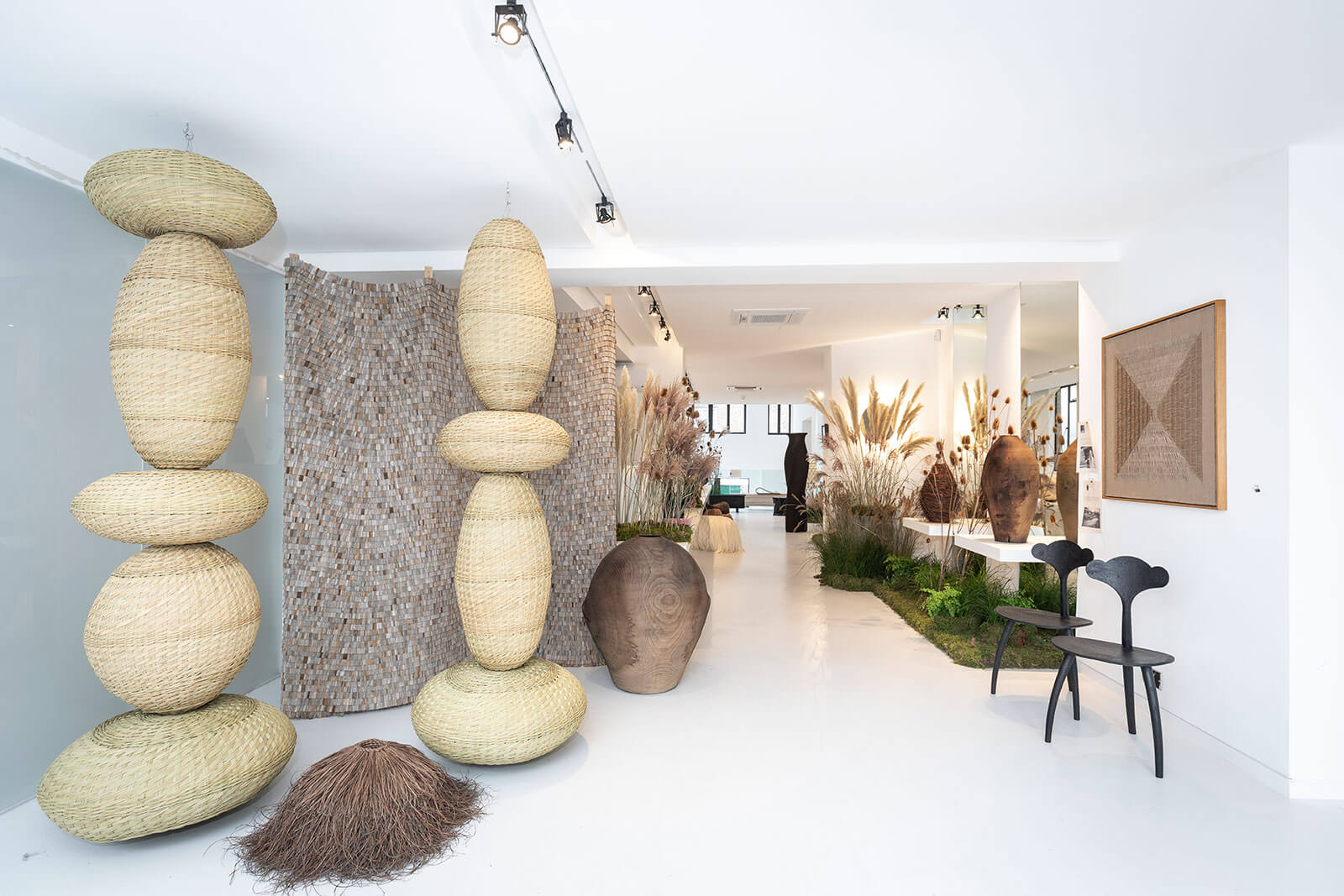
Installation view, ‘Outside In’, Sarah Myerscough Gallery
COURTESY: Sarah Myerscough Gallery
DESPITE THE FRENZY of much of Frieze, there has been a parallel movement of calm in several London exhibitions. Here artists have taken their cue from nature, with a secondary theme of sculpture’s relationship with space.
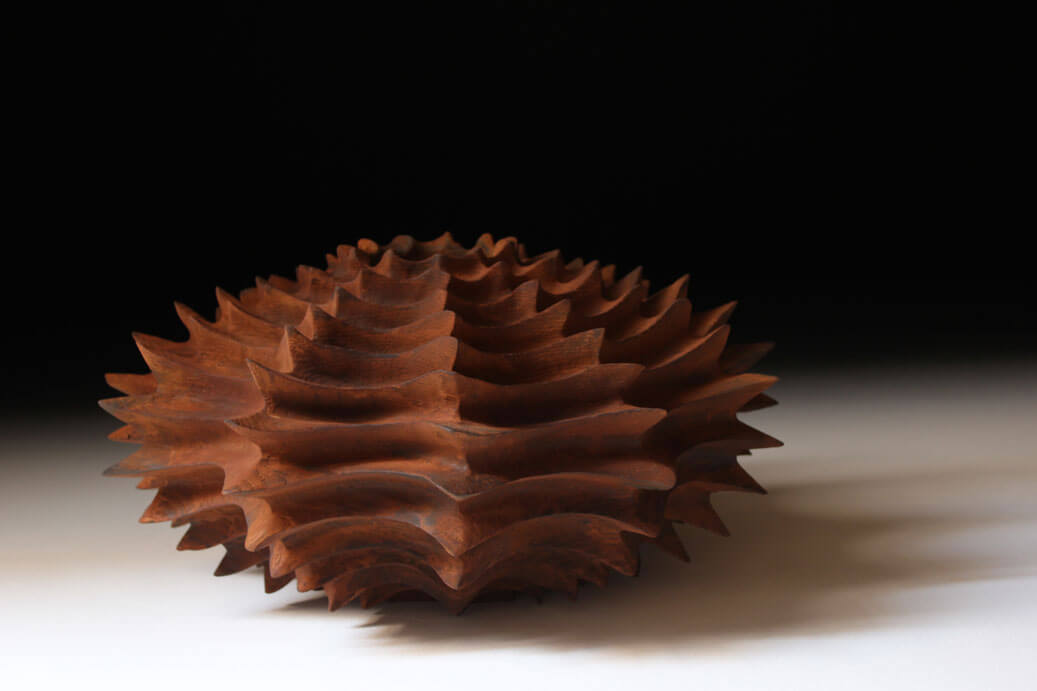
Marc Ricourt, ‘O3 Oak DM18’, 2018
COURTESY: Marc Ricourt & Sarah Myerscough Gallery
The most clear-cut statement is at Sarah Myerscough’s ‘Outside In.’ Here a group of international artist/designer/makers, who define their practice through their ethical and emotional decisions to use organic, sustainable materials, show their responses to producing natural work for the built environment.
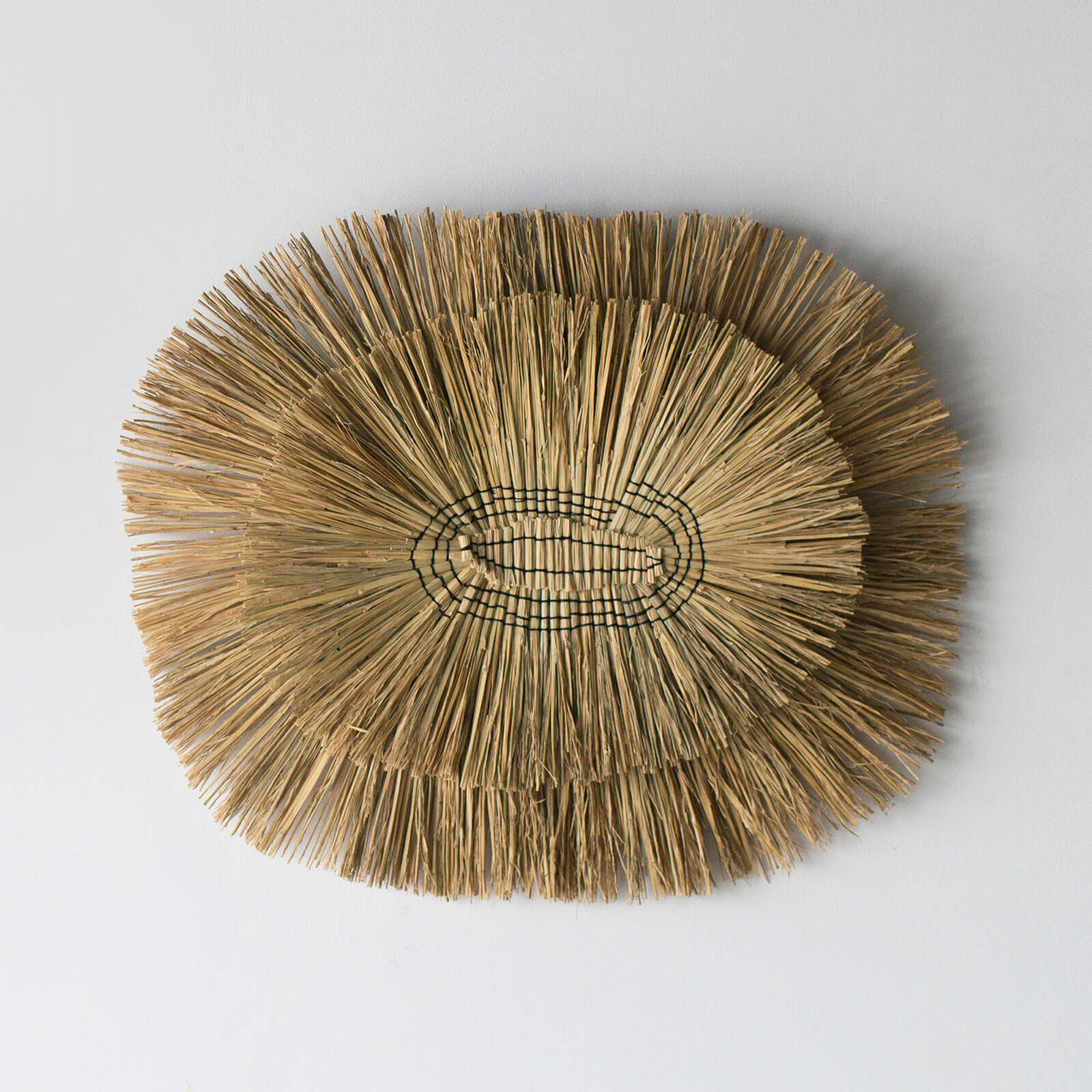
Arko, ‘Untitled’, 2020
COURTESY: Arko & Sarah Myerscough Gallery
Using materials such as wood, willow, and grasses and employing both traditional and new techniques they create objects for the contemporary interior.
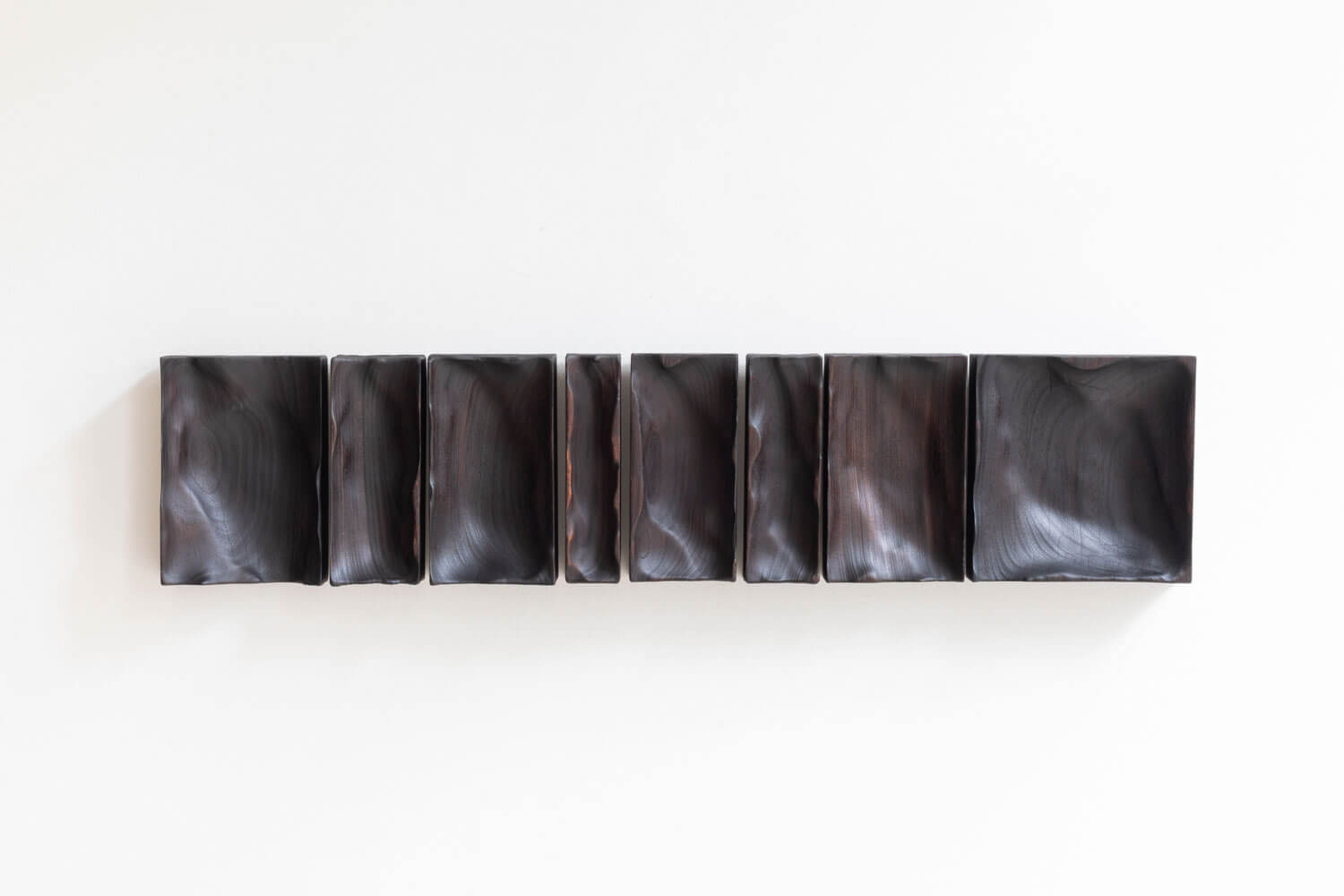
Katrien Doms, ‘Ukiyo 026’, 2021
COURTESY: Katrien Doms & Sarah Myerscough Gallery
Through their work they seek to show how interiors can be grounded in material choice and sustainable practices, yet at the same time be beautiful and innovative. For example, Gareth Neal’s sensuous twisting ‘1755’Si02’ vessel, made by 3D printing sand, or Katrien Dom’s solid softwood panel ‘Ukiyo 026’, sculpted by heart and fire.
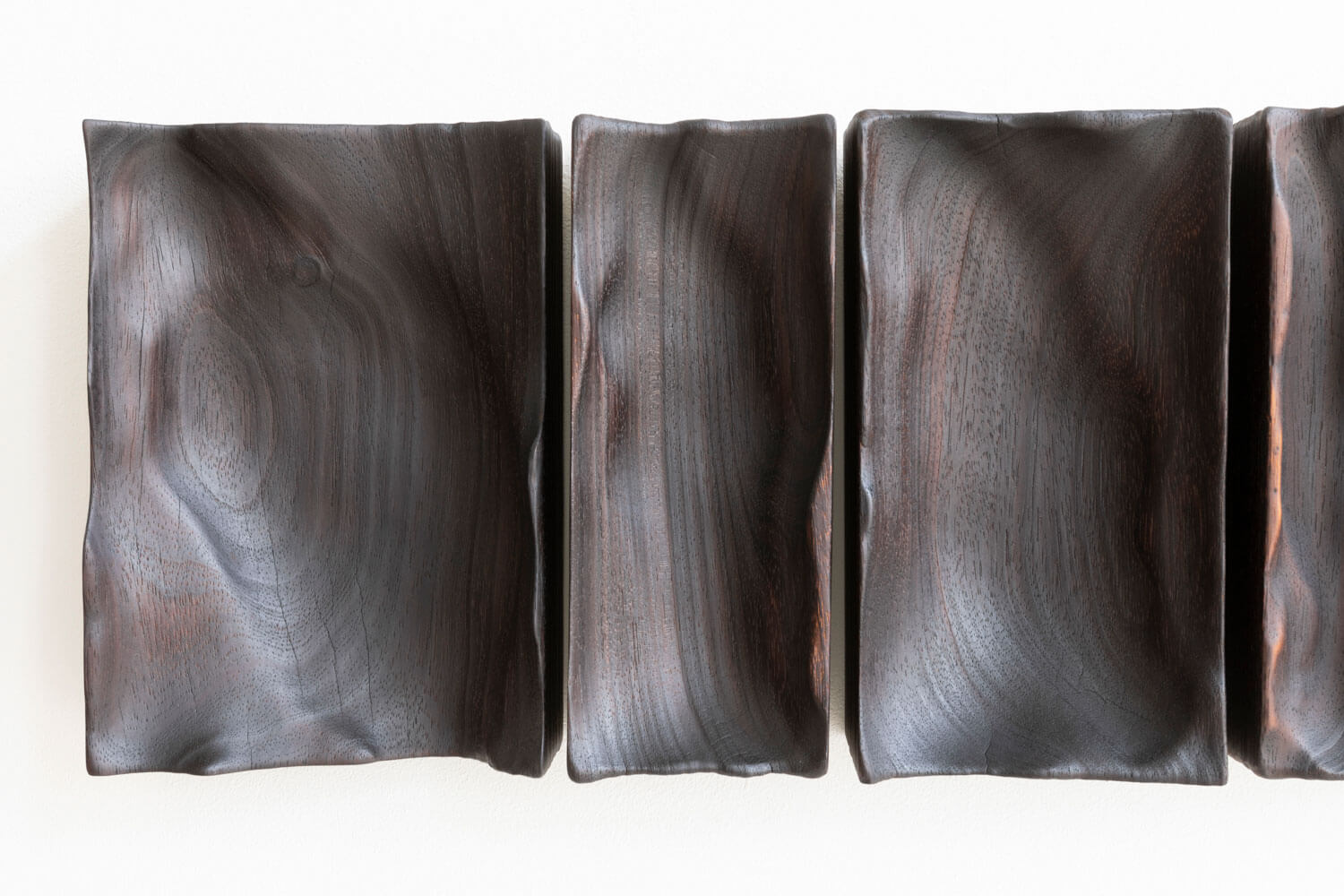
Katrien Doms, ‘Ukiyo 026’, 2021 (detail)
COURTESY: Katrien Doms & Sarah Myerscough Gallery
This social and political consciousness is encapsulated in Fernando Laposse’s ‘Sisal Pup’ a stool that looks like a version of Dougal from the Magic Roundabout, made from fibre grown and then constructed by communities in Mexico who are supported by the project.
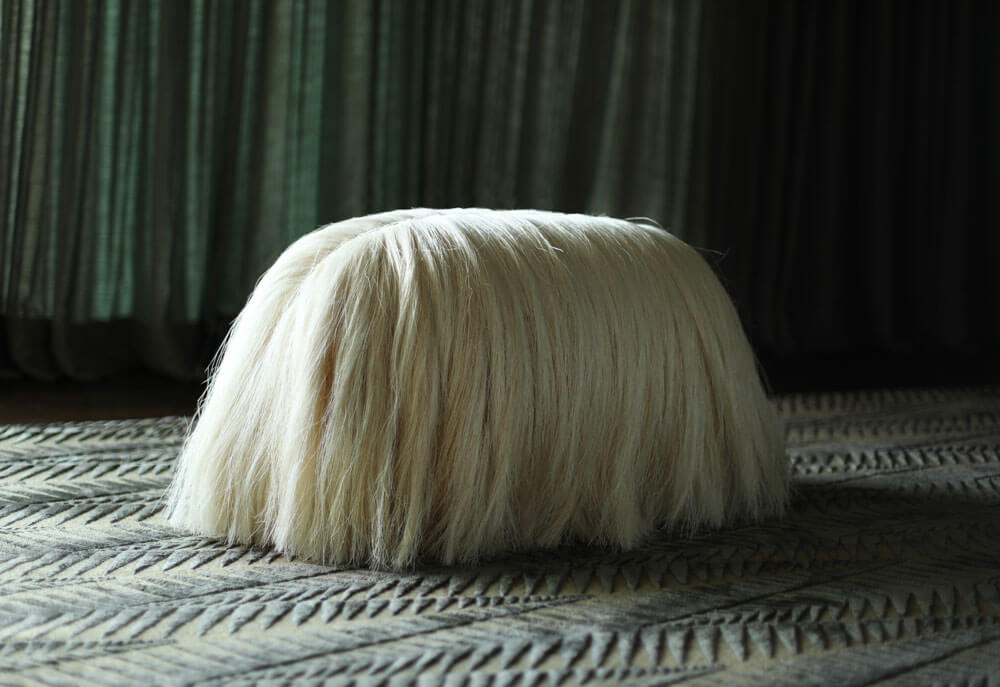
Fernando Laposse, ‘Sisal Pup’, 2021
COURTESY: Fernando Laposse & Sarah Myerscough Gallery
Marcin Rusak’s ‘Perishable Vase’, made from florists’ waste flowers mixed with shellac, beeswax and resin that perish gently over time, highlights issues of waste and mortality. Altogether the pieces on show aim to connect modern-day humans with their more nature-based past and bring the outside in. This might seem pretentious, with some pieces bordering on the folksy, but most are incredibly tactile and engaging, showing the real animus of natural materials.
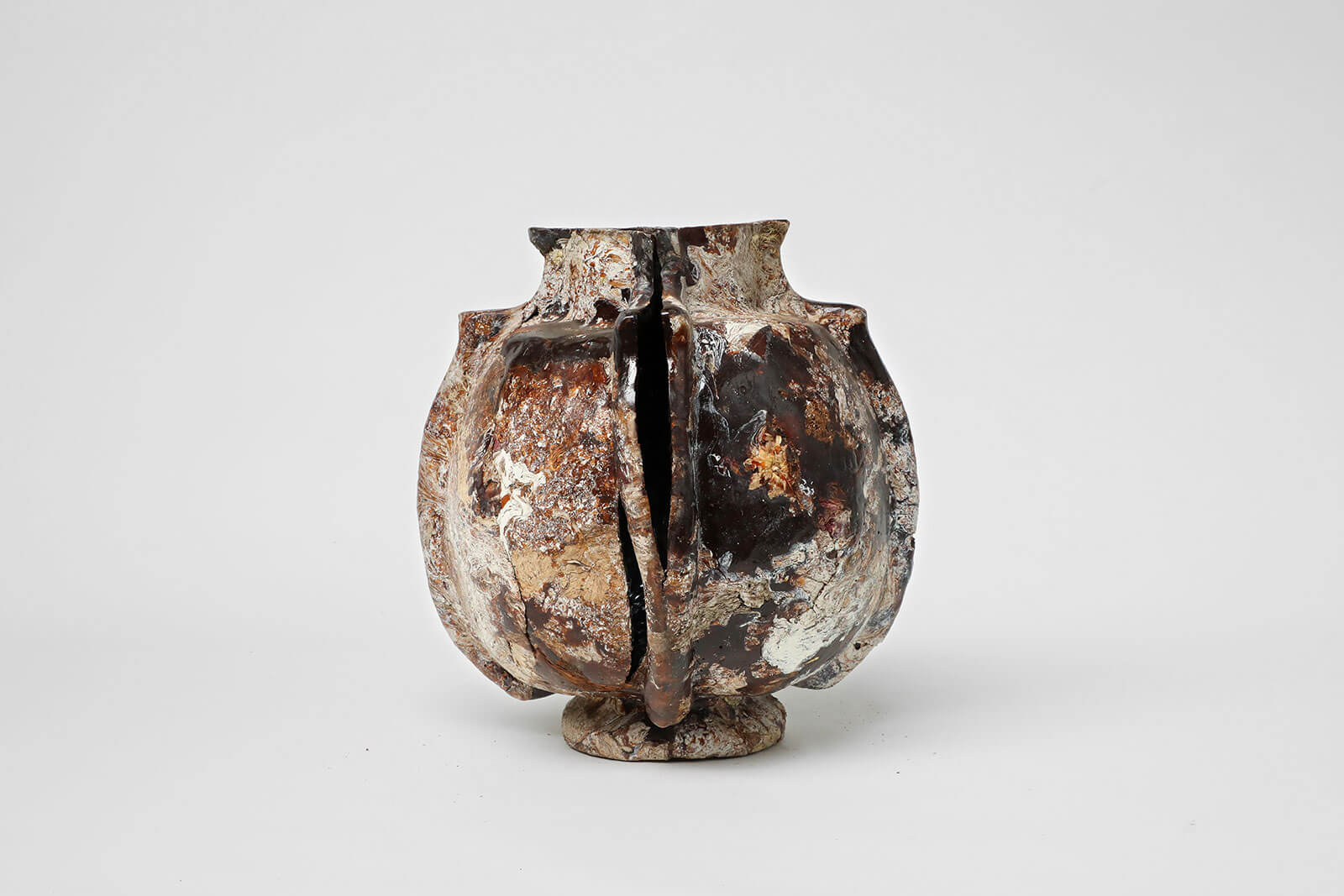
Marcin Rusak, ‘Perishable Vase X’, 2020
COURTESY: Marcin Rusak & Sarah Myerscough Gallery
The relationship between the natural and the handmade is at the core of South Korean artist Wonmin Park’s ‘Stone + Steel,’ exhibition at Carpenters Workshop Gallery. Park, who used to work in sensuous resins that had a diaphanous quality, has chosen two resolute materials – volcanic rock and industrial sheets of steel.
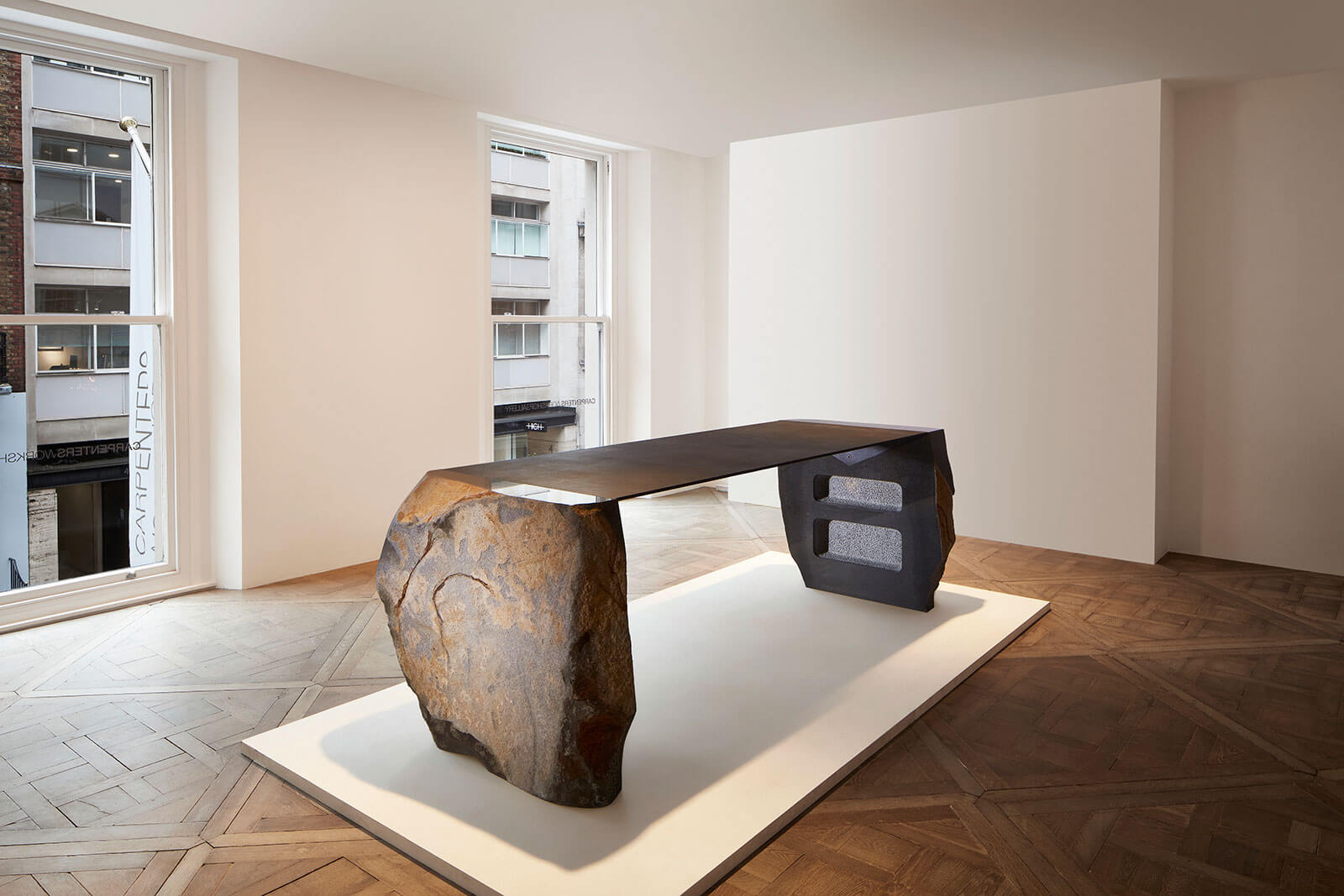
Wonmin Park, ‘Plain Cuts Stone & Steel #6 SS 2106’, 2021
COURTESY: Wonmin Park & Carpenters Workshop Gallery
The boulders that form the chairs and bases of the tables are mined in Japan, then cut into forms that highlight the patterns of the stones’ exteriors.
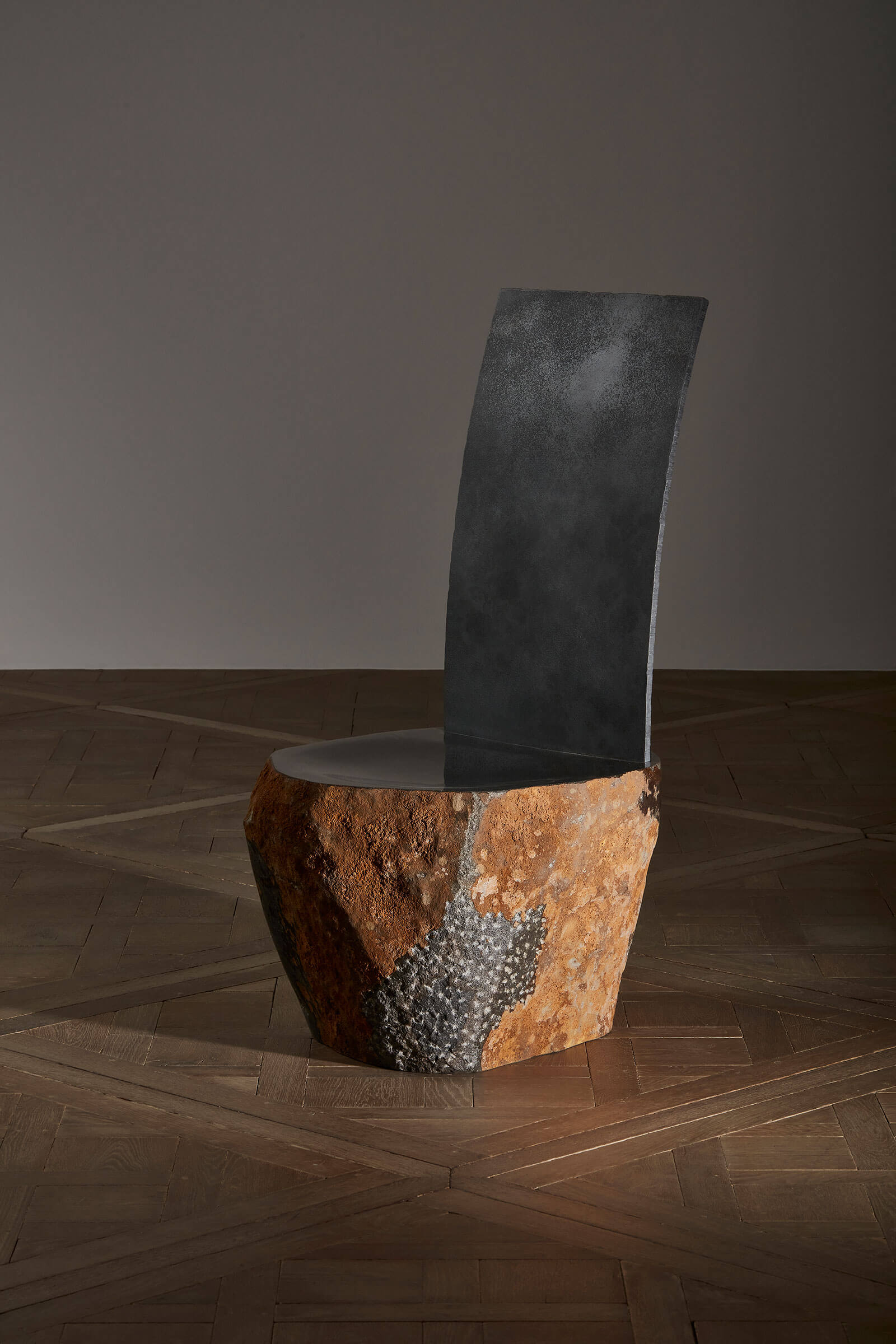
Wonmin Park, ‘Plain Cuts Stone & Steel #8 SS 2108’, 2021
COURTESY: Wonmin Park & Carpenters Workshop Gallery
The dark, iron-rich interiors (caused by air and moisture penetrating the Earth’s crust and oxidising the iron content of the stones) contrast with the ochre, brown shells. The tops of the rocks are highly polished, surrounded by large irregular, steel rims, cut and fitted with engineered precision; the overall effect is like sandy shores surrounding dark, reflective lakes.
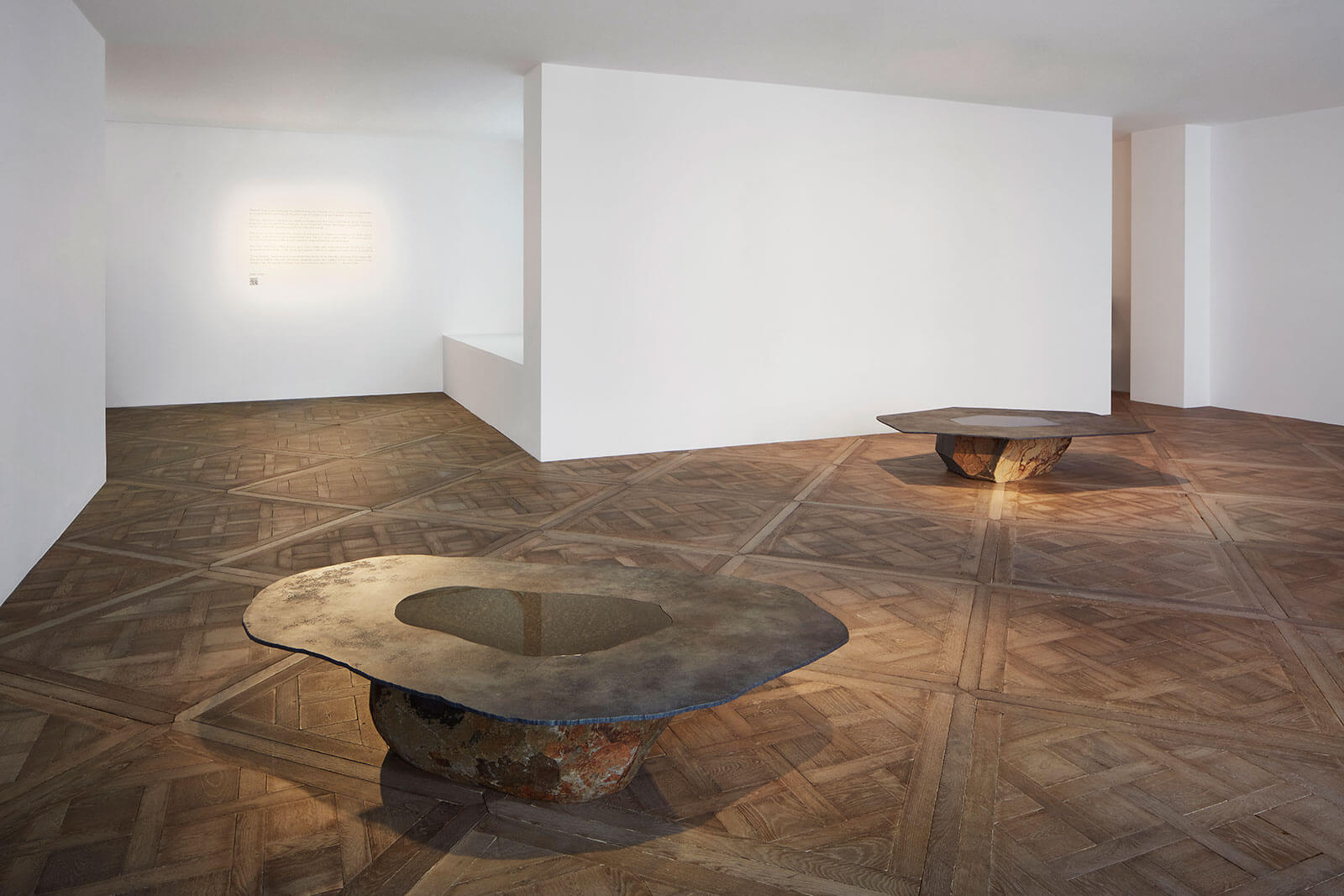
Installation view, ‘Stone + Steel’, Carpenters Workshop Gallery
COURTESY: Wonmin Park & Carpenters Workshop Gallery
Despite their weight (probably requiring reinforced floors) the works seem to float, combining the natural and the manmade with elegance. Park’s designs highlight the uniqueness of each stone and its geological history. They are the same rocks as those used by Isamu Noguchi, for whom Park expresses considerable respect.

Wonmin Park with ‘Plain Cuts Stone & Steel #7 SS 2107’, 2021
COURTESY: Wonmin Park & Carpenters Workshop Gallery
Isamu Noguchi’s work is the subject of a major exhibition at the Barbican, which covers his extensive career and the many media in which he worked. He traversed the intersecting continuums of fine art, design, craft, architecture and landscape. His creations, from sculpture to playgrounds, explore fundamental problems of form – a quintessential expression of human and aesthetic activity. He saw sculpture as an experience that involves the total environment. And like the work of many of the makers already mentioned, Noguchi’s art grew out specific relationships with place and material.
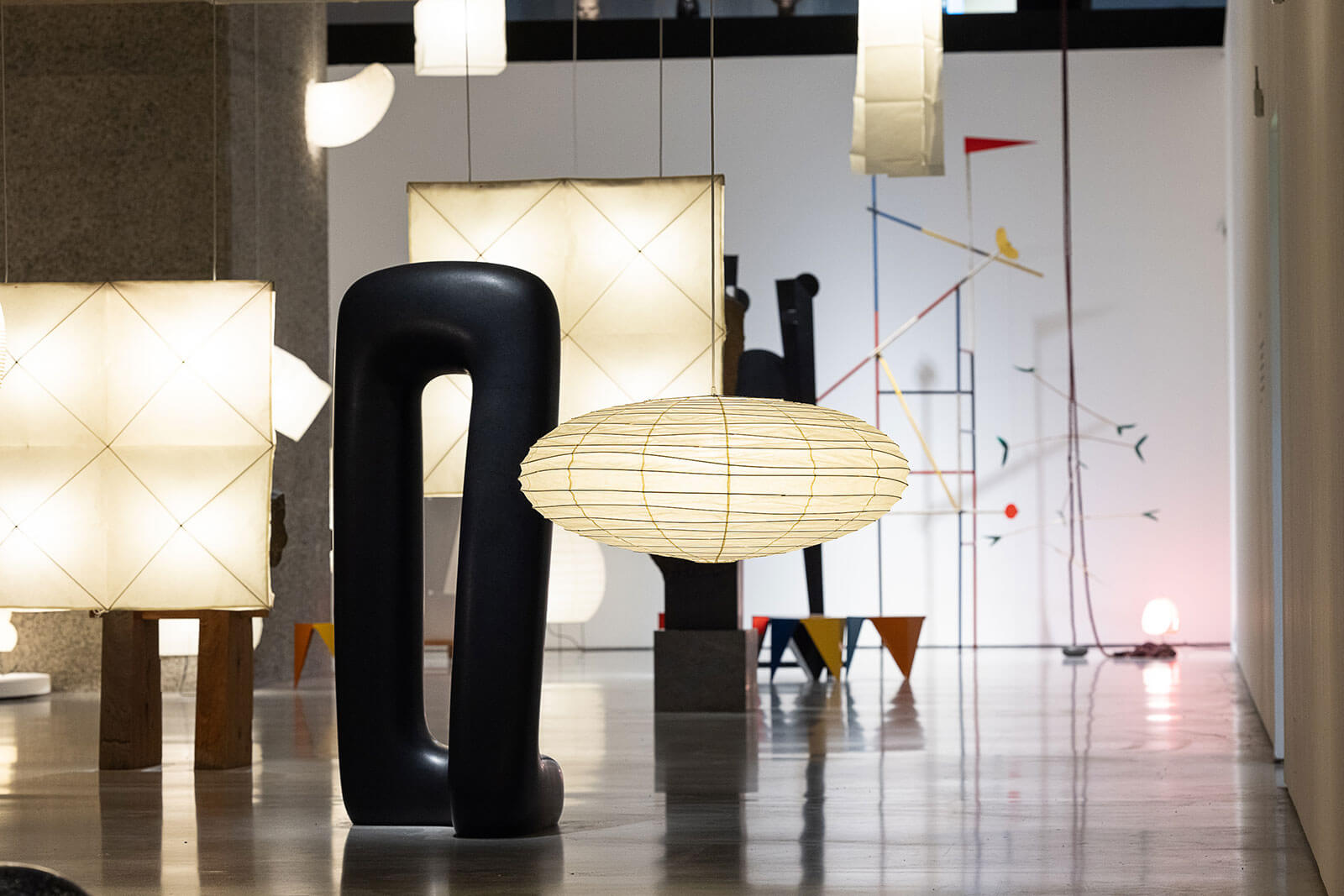
Installation view, ‘Noguchi’, Barbican Art Gallery
COURTESY: Barbican Art Gallery / PHOTOGRAPH: © Tim Whitby / Getty Images
Noguchi is known to many for his (much copied) ‘Akari’ paper lights. Because he designed functional objects as well as more formal sculpture, he was not always taken seriously by the art world. His combining of industrial materials and processes with craftsmanship is in fact a very modern theme. For many fine art critics who came to the exhibition knowing little about him, the show was an eye-opener.
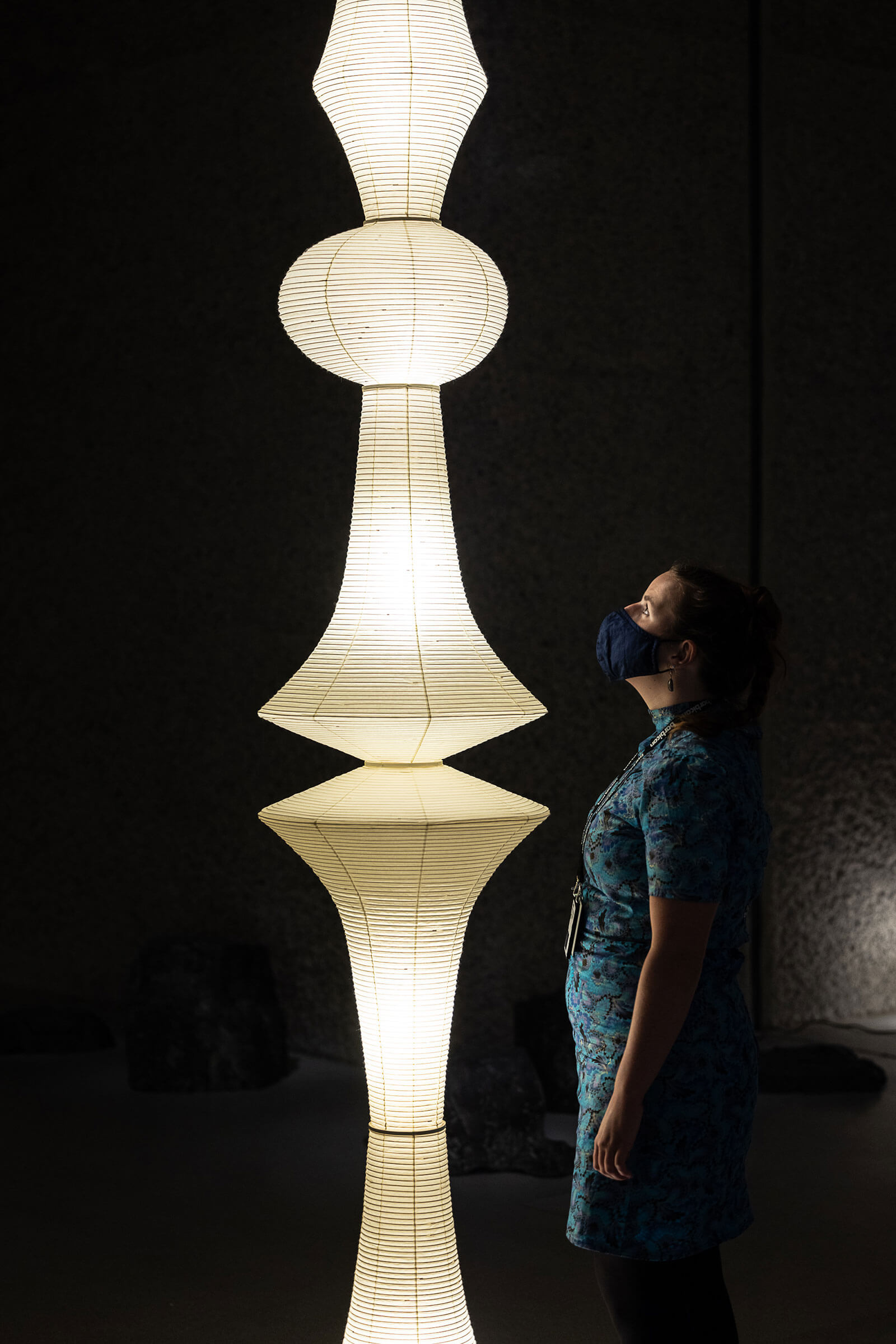
Installation view, ‘Noguchi’, Barbican Art Gallery
COURTESY: Barbican Art Gallery / PHOTOGRAPH: © Tim Whitby / Getty Images
The exhibition clearly demonstrates his range. His early days with Brancusi are manifested in his sensuous sculptures, but he also engaged with Dadists, Cubists and Surrealists. His works were varied; in 1932 he designed a Bakelite casing for a kitchen timer and costumes for dancer Ruth Page. In 1933 he designed his first playground, the first of many. In 1938 he produced his first commissioned sculpture for Associated Press and in 1939, his first dining table. In the 1940s he designed costumes and sets for Martha Graham and in 1952 his illuminated sculpture ‘Akari’ lamps went into production. His influence has been considerable from interiors to fashion, an inspiration acknowledged by Issy Miyake.

Installation view, ‘Noguchi’, Barbican Art Gallery
COURTESY: Barbican Art Gallery / PHOTOGRAPH: © Tim Whitby / Getty Images
The exhibition is not shy in highlighting his political and social ideas. His work ‘Death (Lynched figure)’ 1934, for instance, is based on the lynching of the black man George Hughes. But sculpture – be that a functional object, table, light, baby alarm, playground, or pure sculpture in bronze, paper, aluminium or ceramic – is at the core of his being.

Installation view, ‘Noguchi’, Barbican Art Gallery
COURTESY: Barbican Art Gallery / PHOTOGRAPH: © Tim Whitby / Getty Images
Noguchi saw sculptures as an ecosystem of dynamic forces affecting each other as in nature’s own structure. He embraced social, environmental and spiritual consciousness and saw art as fundamental to our social existence and relationships, in ways that should improve people’s lives. He perceived sculpture not as an isolated object, but a form in space that relates to other objects and the viewer. All this is reflected in the beautiful and haunting curation of this show – not something that can often be said of the difficult spaces of the Barbican gallery.
‘Outside In’ at Sarah Myerscough Gallery runs until 27th October 2021.
Wonmin Park ‘Stone + Steel’ at Carpenters Workshop Gallery runs until 25th October 2021.
Noguchi at the Barbican runs until 9th January 2022.
Watch our interview with Dakin Hart, Senior Curator of the Noguchi Museum, on our TDE TV channel.
